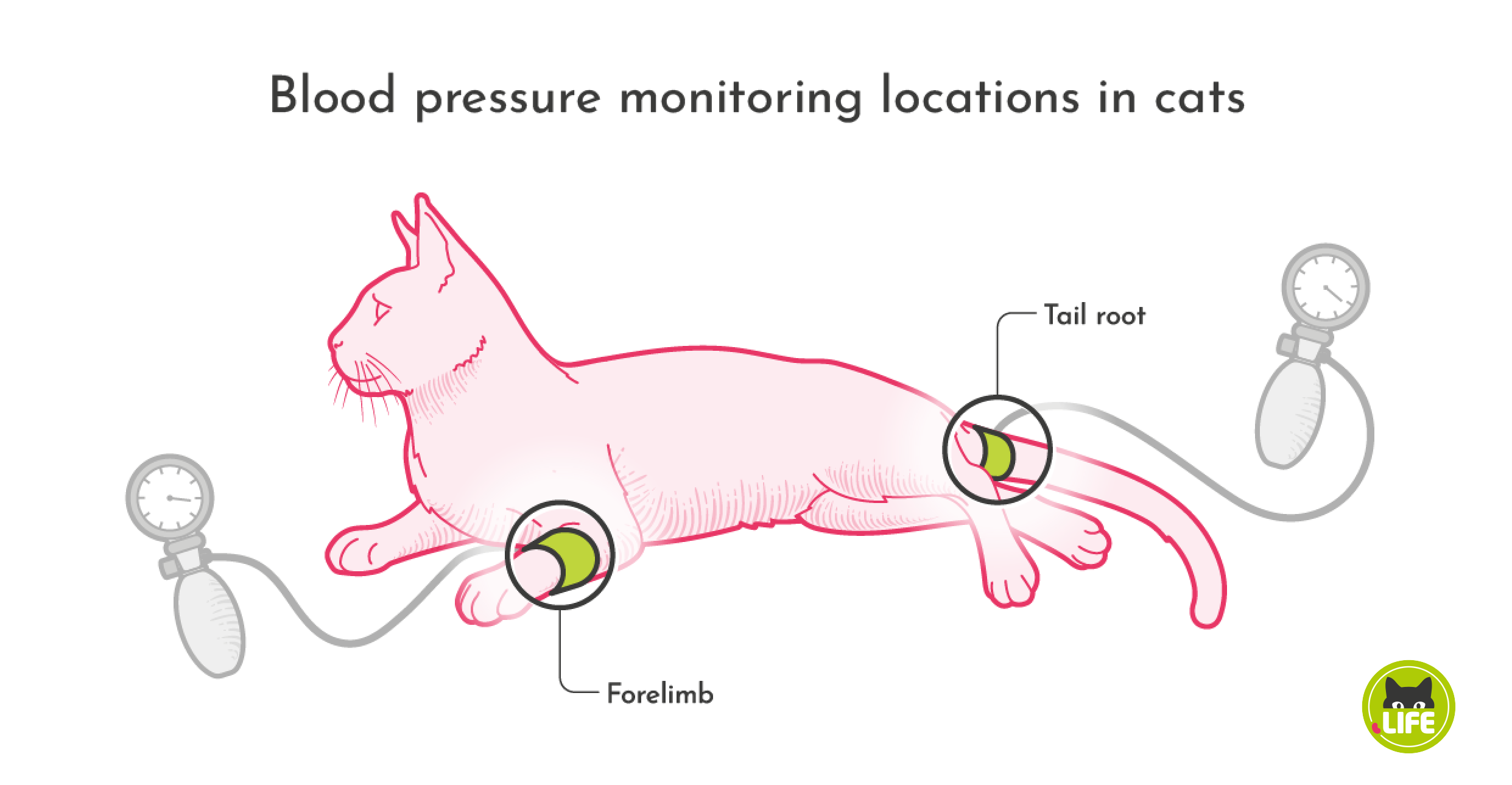Monitoring a CKD cat’s blood pressure is extremely useful. This is done with the help of special blood pressure cuffs (usually around the cat’s tail, but also around a foreleg) and a blood pressure monitor. Not all vets have access in their practice to such equipment. Blood pressure can also rise due to stress and excitement (for example, due to a visit to the vet). A series of consecutive blood pressure measurements are performed. The blood pressure of CKD cats needs to be checked regularly.
Blood pressure measurement involves two separate blood pressure values: systolic and diastolic pressures. The former is the higher of the two and is the value when the heart contracts and empties, pumping blood into the arteries. The diastolic blood pressure is the pressure in the time between contractions, during which blood flows into and fills the chambers of the heart. Usually only the systolic blood pressure is recorded.
In cats, normal systolic blood pressure is 120–150 mmHg.
Cats that are hypertensive (have a blood pressure above 150 mmHg) should receive medication. The aim is to reduce pressure back to normal levels (120–150 mmHg). This requires several follow-up measurements.
The International Renal Interest Society (IRIS) defines four CKD substages based on systolic blood pressure (→ see Stages).
High blood pressure (hypertensionHigh blood pressure.) occurs in about 20% of CKD cats at an early stage. However, data also s that s a much higher percentage. In any event, CKD cats should also have their blood pressure checked; high blood pressure can result in movement disorders, seizures, cramps and blindness due to retinal detachment. In addition, high blood pressure is usually associated with a loss of protein via the urine (proteinuriaIncreased protein in urine, leading to loss of protein. Normally, only a very small amount of protein is excreted in the urine. In chronic kidney disease, the amount lost may increase. High blood pressure damages blood vessels in the nephrons making them more permeable and...), as high blood pressure damages the vessels of the glomerulus making them more permeable to proteins. In addition to these clinical symptoms, high blood pressure is one of the factors responsible for the deterioration of the disease and its progression (→ see Vicious circles).

Clinical findings and laboratory values
Finally, it should be noted that clinical findings, laboratory values and other investigative procedures do not necessarily have to “fit” together.
All cats are unique, and there are some cats whose health status is little affected by their poor test results. Differences in the characters of cats play an important role. Some are natural fighters and can “put up with more”, while others are more sensitive. If a cat is it can thrive in the face of the CKD. In this respect, sick cats can be similar to sick people. The relationship between diagnostic findings and disease severity is only meaningful as an average, and this is also true for the stages.
